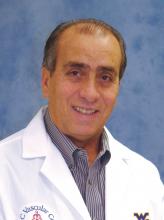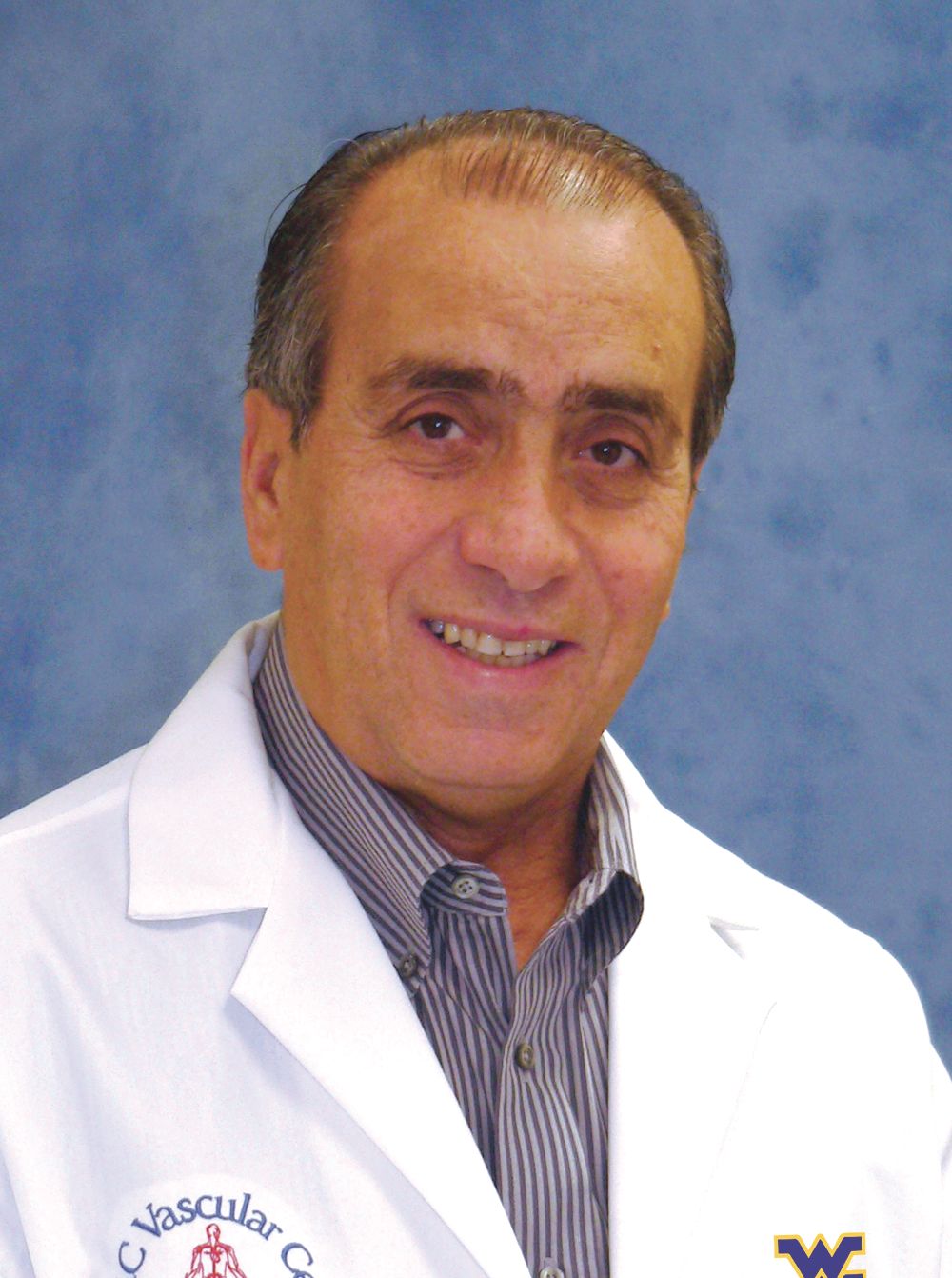User login
Current challenges in management of abdominal aortic aneurysms and endovascular aneurysm repairs will be highlighted during “New Developments in the Management of AAAs and EVAR” on Tuesday morning.
“The session will bring together top experts in the field to cover important, controversial topics in the management of AAAs, and, especially EVAR,” said co-moderator Dr. Ali F. AbuRahma, chief of vascular and endovascular surgery at West Virginia University.
The first presentation will cover an extremely challenging concept — whether inflammatory abdominal aortic aneurysms (AAAs) should be treated with conventional endovascular aneurysm repairs (EVAR), open repair, or immunosuppressive therapy with EVAR. Dr. Sonia Ronchey of Ospedale San Fillipo Neri in Rome and her colleague Dr. Nicola Mangialardi of Ospedale San Camillo Forlanini, Rome will offer a discussion of whether inflammatory AAAs are best treated by EVAR plus immunosuppressive drugs. “The etiology of these aneurysms is not always known,” continued Dr. AbuRahma. “However, many authorities agree that some type of immunologic elements may be the underlying causes of these AAAs, and, therefore, immunosuppressive therapy may be in order.”
This presentation will be followed by a debate on the management of EVAR for patients with hostile neck anatomy. The debaters will be Dr. Andres Schanzer of UMass Memorial and Dr. Dittmar Boeckler of the University of Heidelberg in Germany. Dr. Schanzer will argue that EVARs performed outside the instructions for use (IFU) are associated with higher rates of endoleak and sac growth. Dr. Boeckler will counter with his position that with modern endografts and improved technique, EVARs outside the IFU can have good outcomes with lower rates of endoleak, and sac growth. “Over the past decade, more and more studies have shown that an increasing number of patients are undergoing EVAR outside of the IFU – hostile neck anatomy – with mixed results,” explained Dr. AbuRahma. “Some have reported favorable results, at least in the early and mid-term follow-ups, while others have indicated unfavorable outcomes. This debate will shed some light on the ongoing controversy.”
Dr. Matt M. Thompson of Stanford School of Medicine and his colleagues Dr. Ian Loftus of St. Georges Vascular Institute in London and Dr. Marc L. Schermerhorn of Beth Israel Deaconess Medical Center will present the first argument that the RCTs are wrong. Dr. Janet Powell, honorary consultant at Imperial College in London will take the opposite position. “Several studies from the United States have advocated operating on AAAs of less than 5.5 cm in diameter for male patients and less than 5.0 cm in female patients with favorable results, especially using EVAR, which has a minimally invasive nature,“ stated Dr. AbuRahma. “The two presentations will elucidate the positions that agree and disagree with these findings.”
Physicians will leave the session with enhanced information on these controversial issues involved in AAA management and use of EVAR. “Attendees will have a better understanding of when to use endovascular therapy for inflammatory aneurysms,” concluded Dr. AbuRahama. “They will also have a better concept of whether an aneurysm of below 5.0 – 5.5 cm should receive intervention.”
Session 9:
New Development in the Management of AAAs and EVAR
6:40 a.m. – 7:20 am
Grand Ballroom West, 3rd Floor
Current challenges in management of abdominal aortic aneurysms and endovascular aneurysm repairs will be highlighted during “New Developments in the Management of AAAs and EVAR” on Tuesday morning.
“The session will bring together top experts in the field to cover important, controversial topics in the management of AAAs, and, especially EVAR,” said co-moderator Dr. Ali F. AbuRahma, chief of vascular and endovascular surgery at West Virginia University.
The first presentation will cover an extremely challenging concept — whether inflammatory abdominal aortic aneurysms (AAAs) should be treated with conventional endovascular aneurysm repairs (EVAR), open repair, or immunosuppressive therapy with EVAR. Dr. Sonia Ronchey of Ospedale San Fillipo Neri in Rome and her colleague Dr. Nicola Mangialardi of Ospedale San Camillo Forlanini, Rome will offer a discussion of whether inflammatory AAAs are best treated by EVAR plus immunosuppressive drugs. “The etiology of these aneurysms is not always known,” continued Dr. AbuRahma. “However, many authorities agree that some type of immunologic elements may be the underlying causes of these AAAs, and, therefore, immunosuppressive therapy may be in order.”
This presentation will be followed by a debate on the management of EVAR for patients with hostile neck anatomy. The debaters will be Dr. Andres Schanzer of UMass Memorial and Dr. Dittmar Boeckler of the University of Heidelberg in Germany. Dr. Schanzer will argue that EVARs performed outside the instructions for use (IFU) are associated with higher rates of endoleak and sac growth. Dr. Boeckler will counter with his position that with modern endografts and improved technique, EVARs outside the IFU can have good outcomes with lower rates of endoleak, and sac growth. “Over the past decade, more and more studies have shown that an increasing number of patients are undergoing EVAR outside of the IFU – hostile neck anatomy – with mixed results,” explained Dr. AbuRahma. “Some have reported favorable results, at least in the early and mid-term follow-ups, while others have indicated unfavorable outcomes. This debate will shed some light on the ongoing controversy.”
Dr. Matt M. Thompson of Stanford School of Medicine and his colleagues Dr. Ian Loftus of St. Georges Vascular Institute in London and Dr. Marc L. Schermerhorn of Beth Israel Deaconess Medical Center will present the first argument that the RCTs are wrong. Dr. Janet Powell, honorary consultant at Imperial College in London will take the opposite position. “Several studies from the United States have advocated operating on AAAs of less than 5.5 cm in diameter for male patients and less than 5.0 cm in female patients with favorable results, especially using EVAR, which has a minimally invasive nature,“ stated Dr. AbuRahma. “The two presentations will elucidate the positions that agree and disagree with these findings.”
Physicians will leave the session with enhanced information on these controversial issues involved in AAA management and use of EVAR. “Attendees will have a better understanding of when to use endovascular therapy for inflammatory aneurysms,” concluded Dr. AbuRahama. “They will also have a better concept of whether an aneurysm of below 5.0 – 5.5 cm should receive intervention.”
Session 9:
New Development in the Management of AAAs and EVAR
6:40 a.m. – 7:20 am
Grand Ballroom West, 3rd Floor
Current challenges in management of abdominal aortic aneurysms and endovascular aneurysm repairs will be highlighted during “New Developments in the Management of AAAs and EVAR” on Tuesday morning.
“The session will bring together top experts in the field to cover important, controversial topics in the management of AAAs, and, especially EVAR,” said co-moderator Dr. Ali F. AbuRahma, chief of vascular and endovascular surgery at West Virginia University.
The first presentation will cover an extremely challenging concept — whether inflammatory abdominal aortic aneurysms (AAAs) should be treated with conventional endovascular aneurysm repairs (EVAR), open repair, or immunosuppressive therapy with EVAR. Dr. Sonia Ronchey of Ospedale San Fillipo Neri in Rome and her colleague Dr. Nicola Mangialardi of Ospedale San Camillo Forlanini, Rome will offer a discussion of whether inflammatory AAAs are best treated by EVAR plus immunosuppressive drugs. “The etiology of these aneurysms is not always known,” continued Dr. AbuRahma. “However, many authorities agree that some type of immunologic elements may be the underlying causes of these AAAs, and, therefore, immunosuppressive therapy may be in order.”
This presentation will be followed by a debate on the management of EVAR for patients with hostile neck anatomy. The debaters will be Dr. Andres Schanzer of UMass Memorial and Dr. Dittmar Boeckler of the University of Heidelberg in Germany. Dr. Schanzer will argue that EVARs performed outside the instructions for use (IFU) are associated with higher rates of endoleak and sac growth. Dr. Boeckler will counter with his position that with modern endografts and improved technique, EVARs outside the IFU can have good outcomes with lower rates of endoleak, and sac growth. “Over the past decade, more and more studies have shown that an increasing number of patients are undergoing EVAR outside of the IFU – hostile neck anatomy – with mixed results,” explained Dr. AbuRahma. “Some have reported favorable results, at least in the early and mid-term follow-ups, while others have indicated unfavorable outcomes. This debate will shed some light on the ongoing controversy.”
Dr. Matt M. Thompson of Stanford School of Medicine and his colleagues Dr. Ian Loftus of St. Georges Vascular Institute in London and Dr. Marc L. Schermerhorn of Beth Israel Deaconess Medical Center will present the first argument that the RCTs are wrong. Dr. Janet Powell, honorary consultant at Imperial College in London will take the opposite position. “Several studies from the United States have advocated operating on AAAs of less than 5.5 cm in diameter for male patients and less than 5.0 cm in female patients with favorable results, especially using EVAR, which has a minimally invasive nature,“ stated Dr. AbuRahma. “The two presentations will elucidate the positions that agree and disagree with these findings.”
Physicians will leave the session with enhanced information on these controversial issues involved in AAA management and use of EVAR. “Attendees will have a better understanding of when to use endovascular therapy for inflammatory aneurysms,” concluded Dr. AbuRahama. “They will also have a better concept of whether an aneurysm of below 5.0 – 5.5 cm should receive intervention.”
Session 9:
New Development in the Management of AAAs and EVAR
6:40 a.m. – 7:20 am
Grand Ballroom West, 3rd Floor

